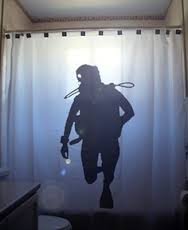brian eiland
Guru
- Joined
- Jul 17, 2013
- Messages
- 930
- Location
- USA & Thailand
- Vessel Name
- RunningTide
- Vessel Make
- 37 Louisiane catamaran
As I've gotten older (and lived to long on land) I've gotten use to a nice, longest (by boat standards), hot showers. Now that I think about a live-aboard situation again, I'm wondering about an isolated shower water system that would recirculate a good portion of the shower water for certain periods of time.
Are there any such systems in existence?
Has such an idea been discussed anywhere on this forum?
Naturally the types of soaps that could be allowed would have to come into question, and of course no peeing in the shower, etc, etc
I just thought we would have the filtrations capable of doing this job these days??
I did see this:
http://www.popsci.com/diy/article/2012-05/2012-invention-awards-recirculating-shower
....and this
Super-Effficient Water-Saving Shower
I guess there are more, just never looked into the subject till just recently. Any body with practical experiences with such ideas?
Are there any such systems in existence?
Has such an idea been discussed anywhere on this forum?
Naturally the types of soaps that could be allowed would have to come into question, and of course no peeing in the shower, etc, etc
I just thought we would have the filtrations capable of doing this job these days??
I did see this:
http://www.popsci.com/diy/article/2012-05/2012-invention-awards-recirculating-shower
....and this
Super-Effficient Water-Saving Shower
I guess there are more, just never looked into the subject till just recently. Any body with practical experiences with such ideas?
Last edited:



